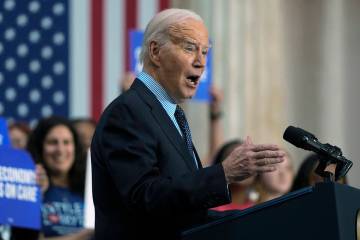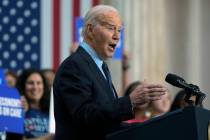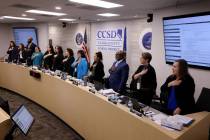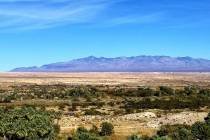EDITORIAL: Rising pensions costs are crippling school districts
Nevada isn’t the only state in which rising pension costs are pinching school district budgets.
California’s districts are struggling to deal with per-pupil pension costs that have doubled in just four years. That’s according to a new report by the nonprofit EdSource.
In 2013-14, California’s average pension contributions per student was $506. That shot up to $1,020 last year — and it’s heading higher. In 2014, the combined contribution rate for California school districts was 21.5 percent of teacher pay. Last year it was 33.8 percent. In 2022-23, it will have soared to 40 percent. As those numbers go up, the amount available for everything else goes down.
Pension debt is “sucking the life blood out of school district budgets,” Stanford University education professor Linda Darling-Hammond told Education Dive.
This won’t end well. The past three months have already produced teacher strikes in Los Angeles and Oakland. Teachers appear to have gained financially from both strikes, but school officials aren’t sure how they’re going to pay for those increases.
Debra Duardo, the Los Angeles county superintendent of schools, said its agreement “continues to move the district to insolvency.”
California’s pension costs have soared for a variety of reasons, including two experienced by Nevada’s pension system. CalSTRS, California’s retirement system for teachers, lost around 25 percent of its value during the Great Recession. To the surprise of some public employees, public pension plans rely heavily on stock market returns.
CalSTRS, like the Public Employees’ Retirement System of Nevada, used to project an 8 percent annual return. That overly optimistic projection lowered contribution rates. CalSTRS has dropped its discount rate from 8 percent to 7 percent. Nevada’s retirement system now uses 7.5 percent.
What’s happening in California should be a warning to Nevada. Nevada’s combined contribution rates for teachers was 20.5 percent in fiscal 2008. It’s currently 28 percent and is going to increase to 29.25 percent in July. Teachers and school districts will split that increase.
Instead of being transparent about the financial difficulties facing PERS, some legislative Democrats are pursuing secrecy. On Wednesday, the Senate Government Affairs Committee voted Senate Bill 224 out of committee. That bill would make secret the names of government retirees collecting the very pensions that are driving these rate increases. Demanding that the public pay more, while limiting their access to public information, is a wrong-headed approach.
Increasing pension costs, both in California and Nevada, are hurting education budgets. The answer isn’t blindly throwing money into a broken system. Legislators need to overhaul Nevada’s pension system.






















